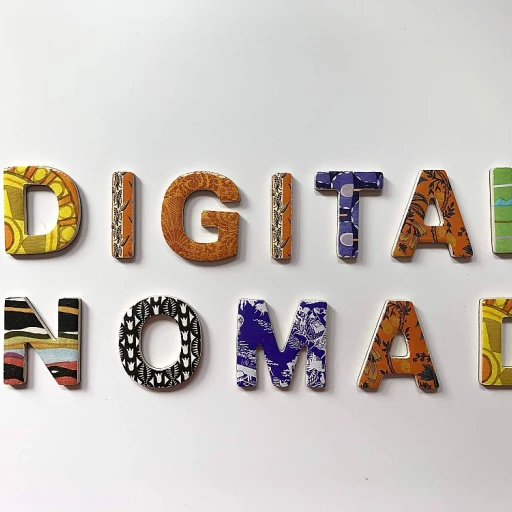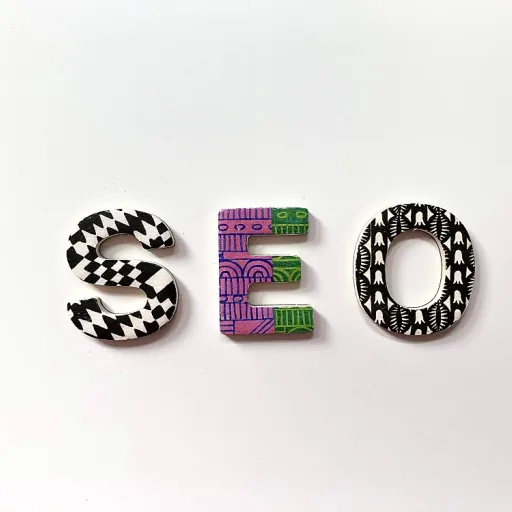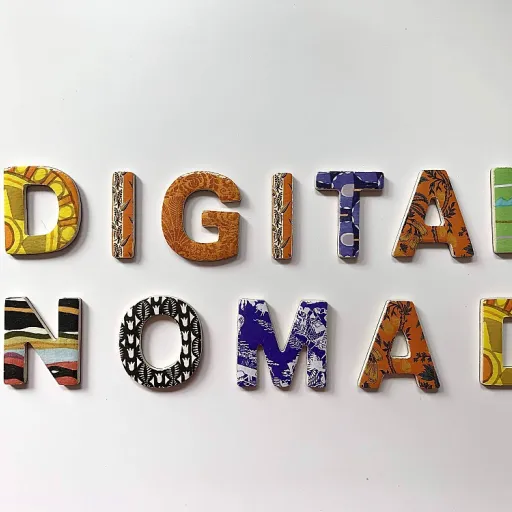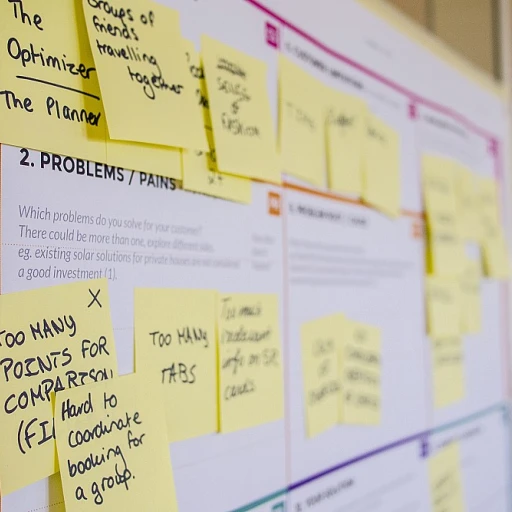
Understanding AI's Role in SEO
Decoding AI's Impact on Search Engine Optimization
In today's digital age, artificial intelligence plays a pivotal role in optimizing websites for search engines. Understanding how AI enhances the connection between search engines and website content is essential for businesses aiming to improve their online presence. AI technologies have been integrated into search algorithms to enhance the relevance of search results and improve user experience. This evolution demands that websites align their content with AI-driven criteria to ensure better visibility. One key aspect AI influences is the way search engines interpret user intent, consequently adjusting the search results displayed. This directly impacts how websites are ranked. Incorporating AI in web design provides new opportunities to boost website engagement through sophisticated marketing strategies. These strategies focus on crafting user-centered designs that encourage navigation and seamless interaction. By optimizing content for AI algorithms, sites can become more SEO friendly, reducing bounce rates and increasing conversion rates. AI enables advanced data analysis, allowing site owners to measure engagement with precision. This aids in optimizing specific design elements such as white space, responsive design, and text formatting, ensuring that the design truly reflects the target audience's needs. Aiming for best practices ensures a mobile-friendly experience, with easy navigation and speedy load times across all devices, thus enhancing the overall brand image. Implementing AI-driven personalization in user journeys and ensuring that all content aligns with AI's expectations are paramount steps for elevating a site's performance in increasingly competitive online spaces. To delve deeper into harnessing AI for improved SEO, consider exploring the dedicated piece on enhancing customer feedback leveraging AI for SEO. This resource provides valuable insights into leveraging AI effectively, aligning with the ever-evolving landscape of digital marketing and SEO strategies.Key Web Design Elements for User Engagement
Design Elements That Capture User Attention
In the realm of web design, capturing and maintaining user engagement is paramount. To achieve this, certain design elements must be prioritized to ensure a seamless user experience. A well-designed website not only attracts users but also keeps them engaged, ultimately improving conversion rates and reducing bounce rates.
Responsive Design for All Devices
Responsive design is no longer optional; it's a necessity. With the increasing use of mobile devices, ensuring your website is mobile-friendly is crucial. A responsive design adapts to various screen sizes, providing a consistent experience across devices. This not only enhances user engagement but also boosts your site's SEO, as search engines favor mobile-friendly sites.
Intuitive Navigation and User-Centric Layout
Navigation should be intuitive, allowing users to find what they need without frustration. A user-centric layout, with clear menus and a logical flow, ensures users can easily navigate your site. This reduces bounce rates and enhances the overall user experience. Incorporating white space effectively can also improve readability and focus attention on key content areas.
Speed and Performance Optimization
Website speed is a critical factor in user engagement. Slow-loading pages can lead to high bounce rates, negatively impacting both user experience and SEO. Optimizing images, leveraging browser caching, and minimizing code can significantly improve website speed, ensuring users remain engaged and satisfied.
Consistent Branding and Visual Appeal
Consistent branding across your site helps build trust and recognition. A visually appealing design, aligned with your brand's identity, can captivate users and encourage them to explore further. Using a centered design approach can highlight important content and calls to action, guiding users towards conversion.
For a deeper understanding of how AI can enhance SEO and web design, consider exploring this detailed analysis.
AI-Driven Personalization in Web Design
Enhancing User Experience through Personalization
Artificial intelligence is revolutionizing web design, particularly in the realm of personalization. Tailoring the user experience can significantly improve website engagement and conversion rates. Here’s how AI-driven personalization is transforming web design practices:- Data-Driven Personalization: AI algorithms analyze user behavior to deliver content that resonates with the target audience. By understanding how users interact with a website, brands can offer personalized experiences that ensure website navigation is seamless and intuitive.
- User-Centered Design: Implementing AI in user-centered design allows websites to adapt dynamically to each visitor. Rather than a one-size-fits-all approach, AI optimizes site elements for better user engagement by predicting user needs and personalizing content accordingly.
- Adaptive Interfaces: AI-driven adaptive interfaces improve user experience by adjusting the layout, design elements, and content presentation based on real-time data analysis. This ensures that the website remains responsive and maintains low bounce rates, even as user preferences evolve.
- Content Recommendations: Through AI, sites can offer tailored content recommendations that engage users more effectively. By presenting relevant text and multimedia content, websites can enhance user engagement, boost SEO-friendly practices, and improve conversion rates.
- Mobile Optimization: Personalization extends to mobile devices as well, ensuring that mobile users experience the same level of engagement and design sophistication as desktop users. AI helps streamline mobile navigation, offering a responsive design that caters to the needs of on-the-go users.
Optimizing Content for AI Algorithms
Crafting SEO-Friendly Content for AI Algorithms
In the evolving landscape of search engine optimization, understanding how to optimize content for AI algorithms is crucial. As search engines become more sophisticated, they rely on AI to better understand user intent and deliver relevant results. Here are some strategies to ensure your content aligns with AI-driven SEO best practices:
- Focus on User Intent: Craft content that directly addresses the needs and questions of your target audience. By understanding what users are searching for, you can create content that resonates and improves engagement.
- Incorporate Semantic Keywords: Use related terms and phrases that naturally fit within your content. This helps AI algorithms understand the context and relevance of your site, enhancing your SEO efforts.
- Enhance Readability: Break up text with headings, bullet points, and white space to improve user experience. A well-structured page not only keeps users engaged but also signals to search engines that your content is valuable.
- Optimize for Mobile Devices: With a significant portion of users accessing content via mobile, ensure your website design is responsive. This improves user experience and can positively impact your search rankings.
- Improve Website Speed: Fast-loading pages reduce bounce rates and improve user engagement. AI algorithms favor sites that provide a seamless experience, so optimizing speed is essential.
- Utilize AI Tools for Content Analysis: Leverage AI-driven tools to analyze your content's performance. These tools can provide insights into user behavior and help refine your strategy to boost conversion rates.
By integrating these strategies into your web design and content creation processes, you can enhance your site's visibility and user engagement. As AI continues to shape the SEO landscape, staying informed and adaptable will be key to maintaining a competitive edge.
Measuring Engagement with AI Tools
Leveraging AI Tools for Measuring User Engagement
In the evolving landscape of web design and SEO, understanding how users interact with your website is crucial. AI tools have become indispensable in this regard, offering insights that were previously difficult to obtain. These tools help in analyzing user behavior, ensuring your website design aligns with best practices to enhance user experience and engagement.
AI-driven analytics tools can track various metrics that are vital for understanding user engagement. These include:
- Bounce Rates: AI can help identify patterns in bounce rates, providing insights into which pages might need design improvements or content adjustments to retain users.
- Conversion Rates: By analyzing user interactions, AI tools can suggest changes to improve conversion rates, ensuring that your site effectively guides users through the conversion funnel.
- Website Speed: AI can monitor and suggest optimizations for website speed, a critical factor in user engagement and SEO.
- Responsive Design: With the increasing use of mobile devices, AI tools can ensure your site maintains a responsive design, adapting seamlessly to various screen sizes to enhance the user experience.
Moreover, AI tools can assist in personalizing the user experience by analyzing data to tailor content and navigation to individual preferences. This personalization not only improves user engagement but also strengthens your brand's connection with its target audience.
By integrating AI tools into your web design strategy, you can continuously measure and improve user engagement, ensuring your website remains competitive in the ever-changing digital landscape. As AI technology advances, its role in optimizing both user experience and SEO will only grow, making it an essential component of modern web design practices.
Future Trends in AI and Web Design
AI's Influence on Future Web Design Trends
The ever-evolving landscape of web design continues to be shaped by technological advancements, with artificial intelligence playing a significant role in predicting future trends. As AI becomes more sophisticated, it provides valuable insights and capabilities that enhance both user engagement and SEO strategies.- Improved User Experience: AI-driven analytics help designers understand user behavior better, allowing for the development of sites that are more responsive to user needs. As search engines become more efficient at evaluating a site's design based on user experience, ensuring ease of navigation, mobile responsiveness, and white space becomes paramount.
- Personalization at Scale: AI allows for a level of personalization that was previously unattainable. By analyzing user interactions and preferences, web designers can offer content and navigation tailored to specific user groups, which dramatically improves user engagement and conversion rates.
- Advanced Content Optimization: By integrating AI algorithms to analyze content, designers and marketers can create SEO-friendly text that resonates with their target audience. Adopting AI tools for content optimization will ensure that a site ranks well on search engines, heightening visibility and engagement.
- Enhancements in Website Design Elements: AI technology allows for the automatic adjustments of design elements according to user interactions, such as adjusting website speed, improving mobile device compatibility, and ensuring centered design. These best practices help reduce bounce rates and increase website engagement.
- Predictive Analysis and Design: Predictive analytics powered by AI can provide designers with the foresight needed to anticipate trends in user behavior and preferences, facilitating the creation of innovative and engaging website designs.













